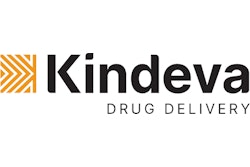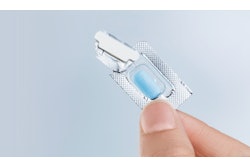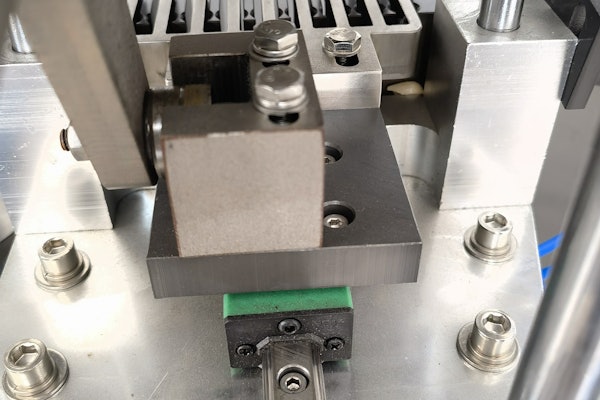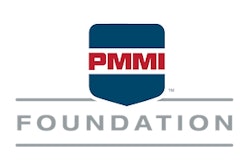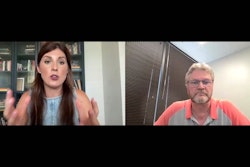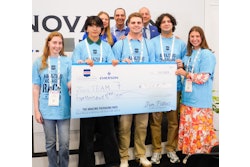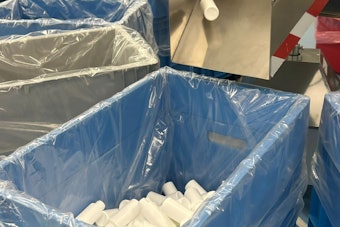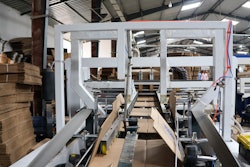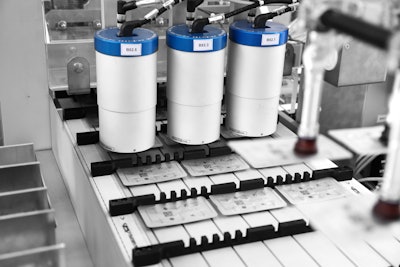
SEA Vision and Marchesini Group are launching a brand-new solution on the market for primary pack serialization and aggregation, comprising a complete range of technologies to print, inspect, and pack serialized blisters and perform aggregation with cartons, all integrated in a 4.0 environment.
The two companies invested in this challenging project to further enhance product identification, which is a prerequisite in the healthcare industry. While today this prerequisite is respected in the case of cartons and pallets, this does not apply to primary packaging, such as blisters. This means that there is still a risk of counterfeiting when it comes to drugs’ primary packaging, and despite all the investments made by pharma companies to ensure that secondary packaging is traceable, there is still a hidden gap that could cause serious damage.
The new solution designed by SEA Vision and Marchesini Group is strategic—when the blister is distributed (for example, in hospitals, pharmacies, or in the consumer’s hands) or used separately from its original packaging—and faces all the challenges of a project of this nature. This cutting-edge solution is the ideal choice for any pharmaceutical manufacturer that wants to be anticipate future regulatory implementations and give their packaging processes added value.
For this project, Sea Vision focused its research and development on two areas: the choice of best hardware and latest-generation software development. With regard to hardware, the contact image sensor with CoaXPress interface was identified by SEA Vision as the most appropriate tool for the needs of this technological challenge. Integrated into the SEA Vision Tracker, this sensor makes it possible to homogeneously inspect web up to 367 mm with high resolution (600 dpi), inspect foils in a wide range of materials; achieve a high image transfer speed, enabling line speeds of up to 75 m/min; minimize the physical footprint in the machine; and cancel the shear deformation effect on the image to optimize print quality control.
In terms of software development, SEA Vision created new algorithms for reading codes and controlling print quality, and has further developed its own application in order to maximize the performance of available threads.
The Marchesini Group Integra 720V is a compact multilane blister line (up to three blister infeed lanes) with a completely balcony-style structure, comprising two sections: a blister packaging machine that forms the blisters and places the products for packaging in their cavities and a cartoning machine that packages the blisters in their cartons.
The two sections are connected by a Robocombi, a three-axis robot that is fully integrated in the line and entirely created by the Marchesini Group research & development departments. This high-tech arm, which feeds the blisters into the product conveyor boxes, can be programmed to execute different stacking sequences based on the blister count set and is controlled by software that permits automatic synchronization of the transfer, tracking, and stacking system. The two sections can be separated by a partition, so they can be included in environments of different classes and can be operated independently, depending on the customer’s needs.
Integra 720V has an innovative pusher and counter-pusher unit, a rotary drum carton opening system to cope with very high speeds, and an efficient leaflet picking and insertion system. The result is a line that can produce up to 720 blisters (made of aluminum+PVC/PVDC/PET/aluminum and other materials) and up to 500 cartons/min (with tuck-in or glue closure and many other combinations), permitting easy cleaning and size changing, since the product loading area is separated from the electrical and mechanical parts.



